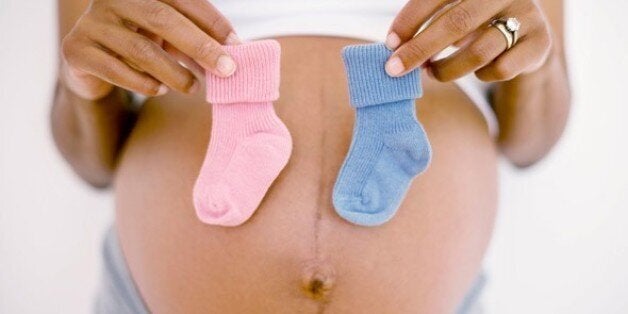
This week you might find yourself focusing on the birth. Have you had a tour of the birth unit yet? If you're taking NHS parentcraft classes and giving birth in a hospital maternity unit you'll probably get invited to take a tour, but if not you'll need to make enquiries yourself.
SEE ALSO:
These Underwater Babies Have An Important Message For You
Orgasm, So'unique and Like: Reddit Reveals The 'Worst' Baby Names In The World
There are usually regular tours you can sign up for or you may find that the midwives are happy to arrange an individual tour at a time that suits you.
Go armed with a list of questions such as: Can I bring my own music? How many birth partners do you allow into the delivery suite? Do you have any aids to active birth (birthing balls, birthing pool, and so on)? What will happen if my birth isn't progressing? Don't feel shy about raising any concerns – the midwives, no doubt, would have heard it all before!
Inside story
Your baby's weight gain is slowing down but still steady, and this week tips the just over the 1kg mark at around 2.4lb. The crown-to-rump length is around 25cm (almost 10in). Hair continues to grow as eyelashes, brows and over the scalp, and the bones are hardening. The lanugo (downy hair) over your baby's skin that has been helping to provide insulation since around week 15 starts to shed, although some babies are born with a few patches, especially if they're premature. The survival rate for babies born from 28 weeks is more than 90%.
On the outside
You might be tested for anaemia and double-checked for gestational diabetes. Anaemia is the medical name for a low red blood cell count. It's fairly unusual to get symptoms in pregnancy – or at least to notice them, as the main ones are tiredness, dizziness and breathlessness, all of which are pretty common in pregnancy in any case.
If you haven't experienced leaky boobs, you might get the odd spot from now on as your breasts start producing colostrum, the first highly nutritious substance that will nourish your baby in the early days after birth. Your placenta continues to pass antibodies to your baby.
Things to think about
It's about time to look into your options for pain relief. Depending on your birth plan, you might be convinced you will turn down all offers, but because no two labours are the same and it's always best to keep your options open. If you are planning a home birth, you'll probably only be offered Entonox (gas and air) and, possibly, pethidine. In hospital your options are more extensive.
Medical pain relief options to research include:
• Epidural anaesthesia – a pain block which is injected into a space between the vertebrae and which should numb your entire pelvic area.
• Spinal block – similar to an epidural, but quicker to set up. It's injected into the sac in the spine containing spinal fluid and can't be 'topped up'.
• combined spinal and epidural – the epidural is set up at the same time as the spinal, but no epidural anaesthetic is introduced until the spinal wears off.
• Pethidine/diamorphine – injectable pain relief that aids relaxation as well as pain relief, but can result in wooziness and memory loss.
Non-medical and self-help methods include:
• TENS (Transcutaneous Electrical Nerve Stimulation) – delivers painless electrical pulses to the body via electrodes placed on the skin, which block the way pain messages are delivered to the brain and stimulates the body to produce endorphins (natural feel-good hormones).
• self-hypnosis – either with the help of a practitioner or self-taught.
• visualisation – either with the help or a practitioner or self-taught.
